Take control of construction dust
Improve working comfort, safety and productivity with Hilti Dust Removal Systems (DRS)
Everyday construction jobs – such as grinding, cutting, drilling, breaking and chasing – may create hazardous dust which can negatively impact health and safety but also jobsite productivity. In addition, construction dust does not just stay at the jobsite, but can spread to other areas impacting people, nature and the environment.
Many of the harmful dust particles created are so tiny that they are barely visible, and the smaller they are the longer they take to settle. For example, a 0.1 micrometer dust particle can take more than 12 days to settle on the floor from a height of just one meter [1]. This is why on jobsites, even when we don’t see construction dust, we can still smell it – if you think a room smells “like concrete”, it's probably because of microscopic concrete dust particles circulating in the air.

Dust can pose a threat to Health and Safety
No-one in the construction industry wants to expose team members to unnecessary hazards, but the longer a worker is exposed to dust, the more risks posed to their health and safety.
Silica dust particles – found in concrete, tile, brick and mortar – can cause cancer and incurable silicosis if long-term overexposure reaches the lungs’ air sacks (alveoli). Exposure to silica dust particles may also cause and possibly worsen cases of asthma.
Dust can impact nearly every stage of the job
As well as reducing productivity through illness and sick leave, dust can impact nearly every stage of construction jobs:
- Wasting time: sealing off areas before starting work
- Damaging fixtures and fittings: such as carpets, furniture and other furnishings
- Affecting other work: such as plastering, painting and electrics
- Delaying handover: time-consuming clean-up work afterwards
Less noticeably, construction dust can also clog up tools by getting into motors and other working parts, which can lead to high repair costs and frustrating downtime. Dust particles also collect on sharp elements of inserts - such as chisel tips, drill bit edges and grinding disc surfaces - possibly making them blunt and shortening their life span.
As well as posing a threat to your team’s health and safety, concrete dust can also impair working comfort by reducing visibility, causing coughs and sneezes, irritating eyes and clogging clothes, hair and mobile phones. Working to reduce exposure to hazardous dust not only makes working conditions better, but it also boosts productivity thanks to a more comfortable working environment.
How do you measure dust on the jobsite?
We know why it makes sense to minimize dust exposure on jobsites. But what exposure limits should you be aiming to avoid?
In the UK, there are official guidelines on exposure limits which you need to be aware of. Firstly, the HSE’s Control of Substances Hazardous to Health (COSHH) regulations define Workplace Exposure Limits (WELs) for specific dusts. The WEL for respirable crystalline silica (RCS) dust is 0.1 mg per cubic meter averaged out over an 8-hour workday. Other respirable dusts are limited to 4 mg per cubic meter and other inhalable dusts to 10 mg per cubic meter, averaged out over the same time period [2]. The latter is roughly equivalent to only the weight of a 2 Euro Cent coin.
Similar standards are imposed across Europe, meaning that wherever you have jobsites within the EU you have the challenge of keeping your team’s dust exposure to low levels.
So how can you reduce construction dust inhalation? We recommend following the "STOP Principle"
Substitution: eliminate the risks of dust by using alternatives
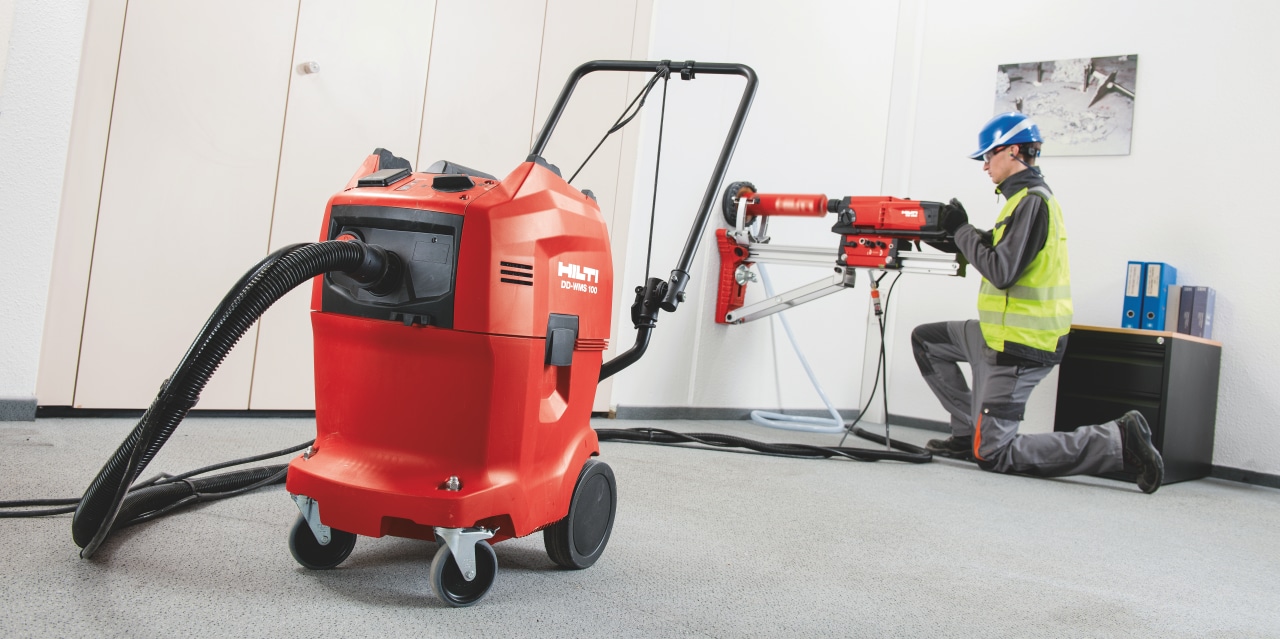
Wet diamond drilling
Keep jobsites cleaner by collecting slurry created during wet diamond drilling. Units such as the DD-WMS water management system supply, filter and collect slurry for easy disposal.
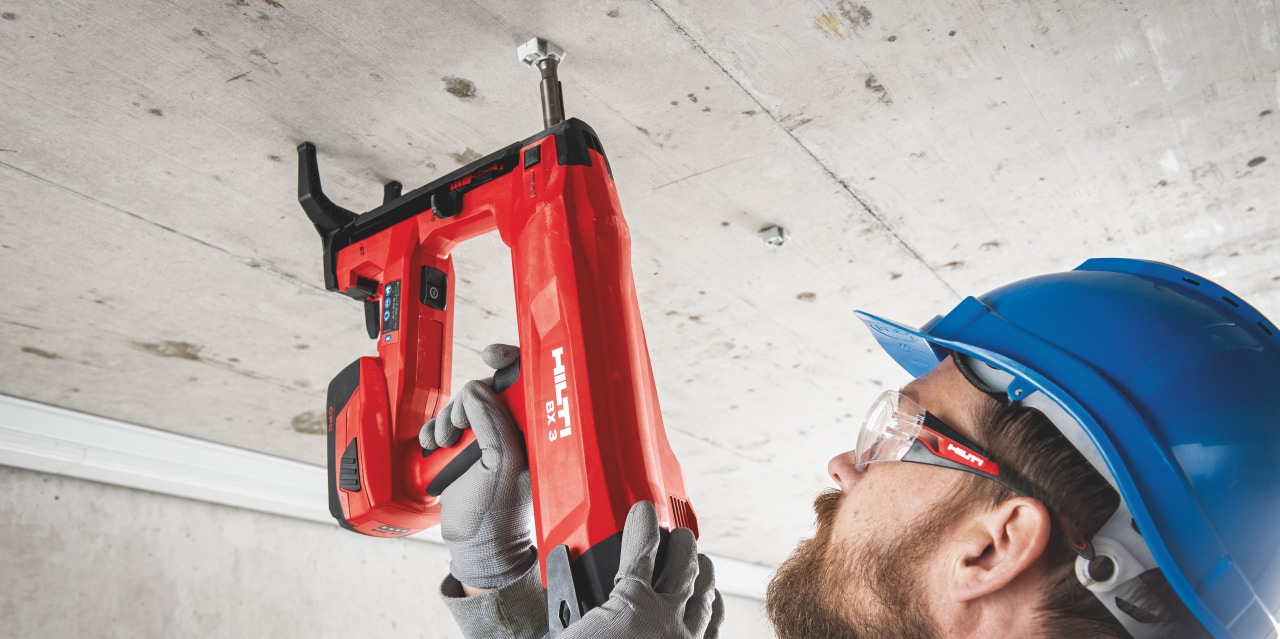
Direct fastening
Make the switch to the BX 3 battery-powered nailer, designed to be a cleaner, quieter and virtually dust-free alternative to drilling.
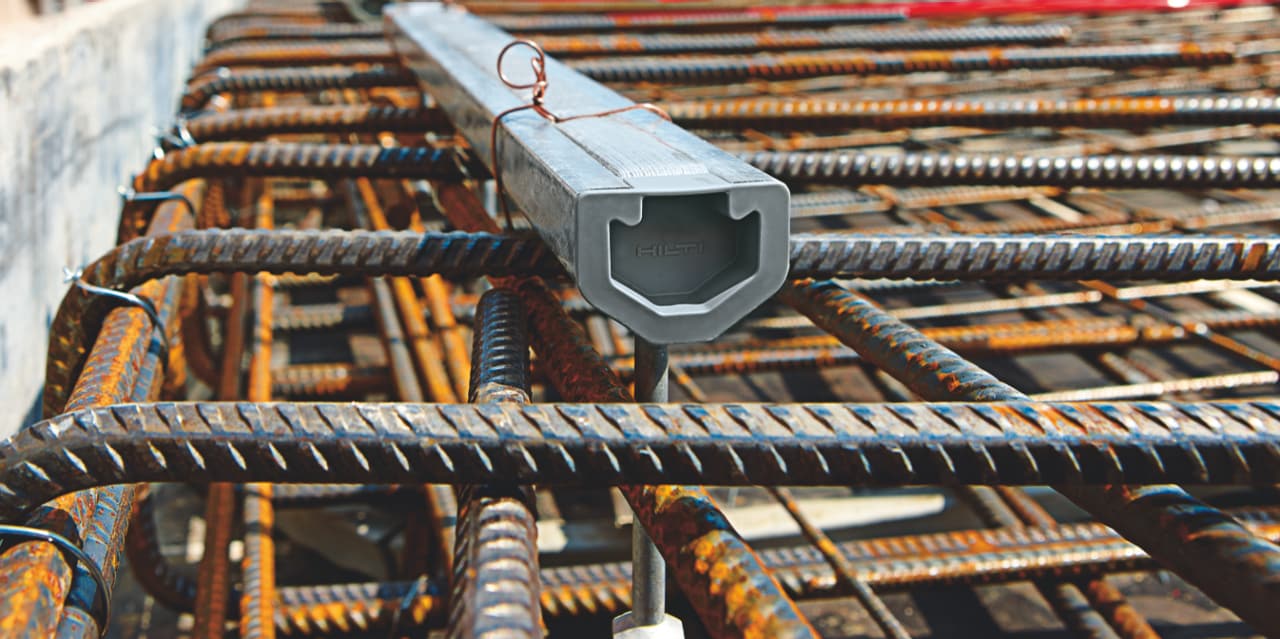
Designing out concrete dust
Choose low-dust base materials or place our HAC cast-in anchor channels around the rebar before the concrete is poured, meaning little to no drilling, and therefore no concrete dust.
Technical: products to reduce dust inhalation
Hilti has decades of experience in preventing, managing and removing construction dust. At our Dust Research Center in Kaufering, Germany our Dust Experts are part of a community actively developing relevant standards like EN 50632.
Hilti power tools, accessories and inserts (such as drill bits, discs, blades or chisels), are designed as harmonized Dust Removal Systems (DRS) to maximize the amount of harmful dust removed at source and collect it efficiently with high-performance vacuum cleaners.
Consequently, 95% of our power tools can contribute to virtually dust-free, and therefore, healthier jobsites.
Applications include:
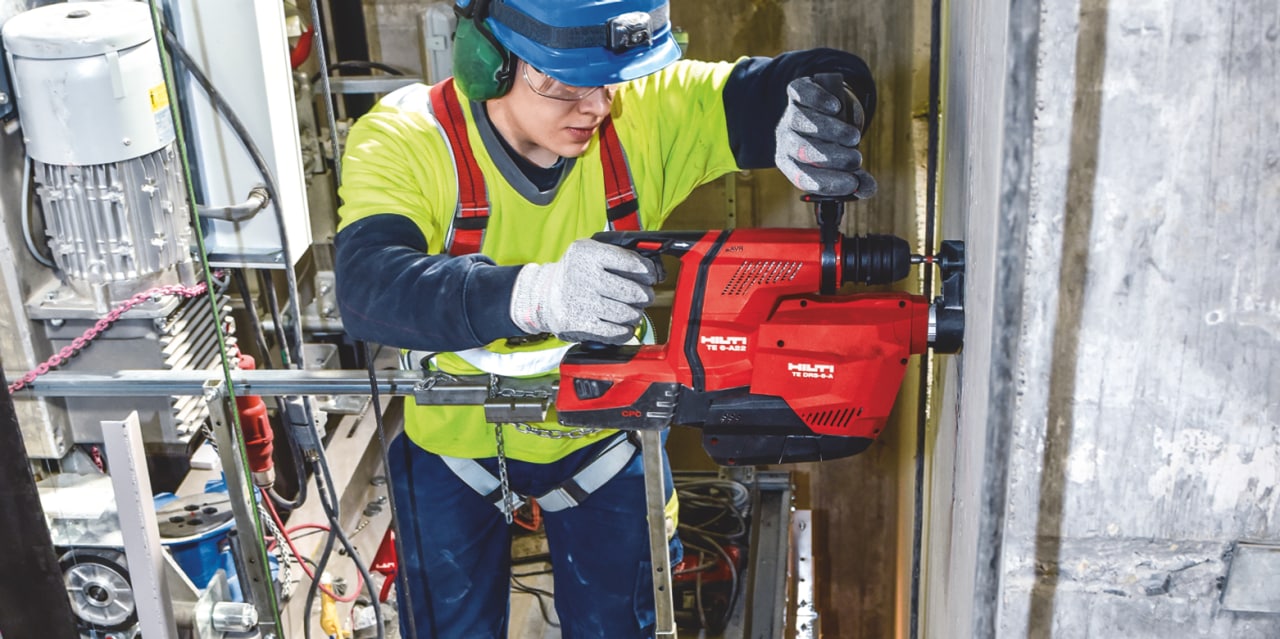
Drilling
Remove up to 97% of dust with integrated dust removal systems like the TE-DRS, compatible with the TE 6-A22 cordless rotary hammer.
Similarly, the TE-YD hollow drill bit – when used with SDS combihammers such as the TE 50-AVR and VC 40-M wet and dry vacuum cleaners – provides virtually dust-free concrete drilling.

Chiseling
Remove up to 95% of dust when chiseling with tools like the TE 2000-AVR concrete demolition hammer, combined with the TE DRS-B dust management and a universal vacuum cleaner like the VC 20-UM Y.
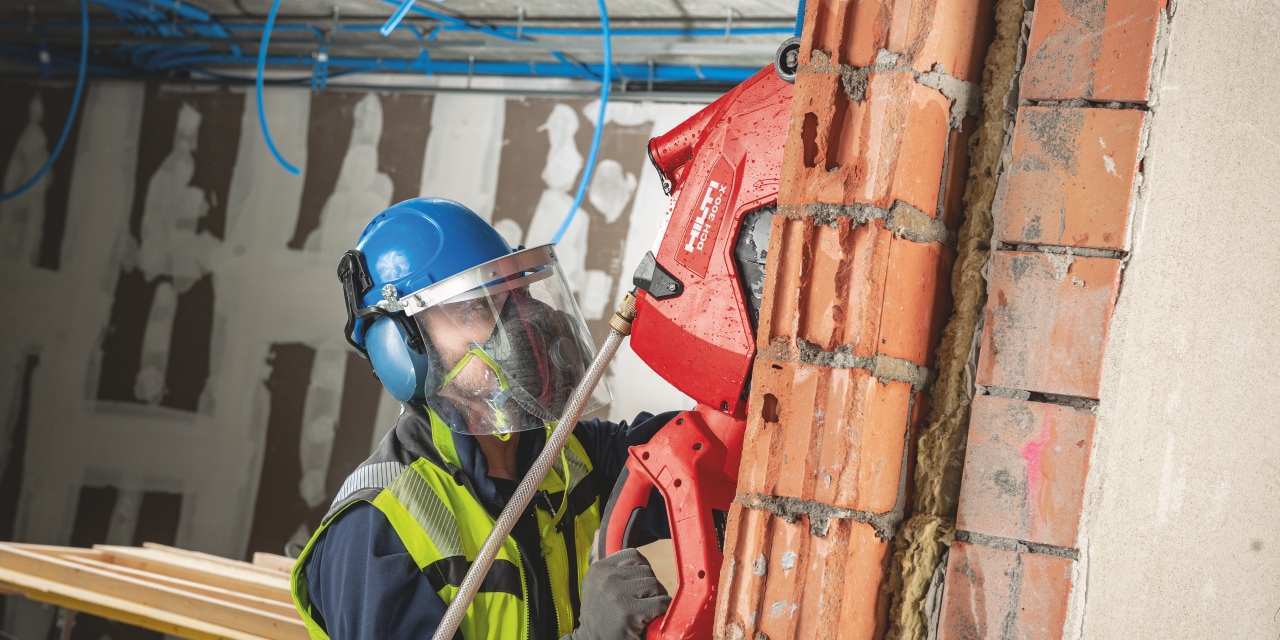
Slitting
Wet concrete cutting using the DCH 300-X diamond cutter can be up to 30% faster than dry cutting.
If you prefer the convenience of dry cutting, the tool is virtually dust-free when used together with a vacuum cleaner such as the VC 60M-X.
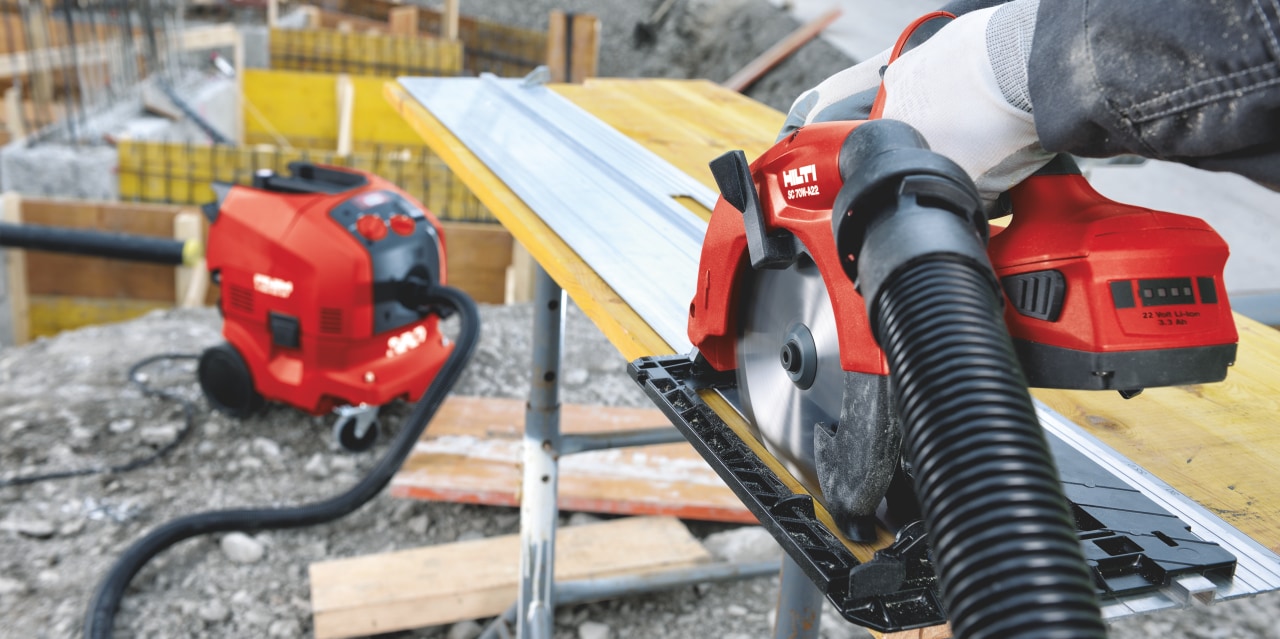
Cutting
Dust extraction when cutting with cordless circular saws like the Hilti SCW 22-A or SC 70W-A22 is easier than ever – just connect a universal vacuum cleaner, such as the VC 20-UM.
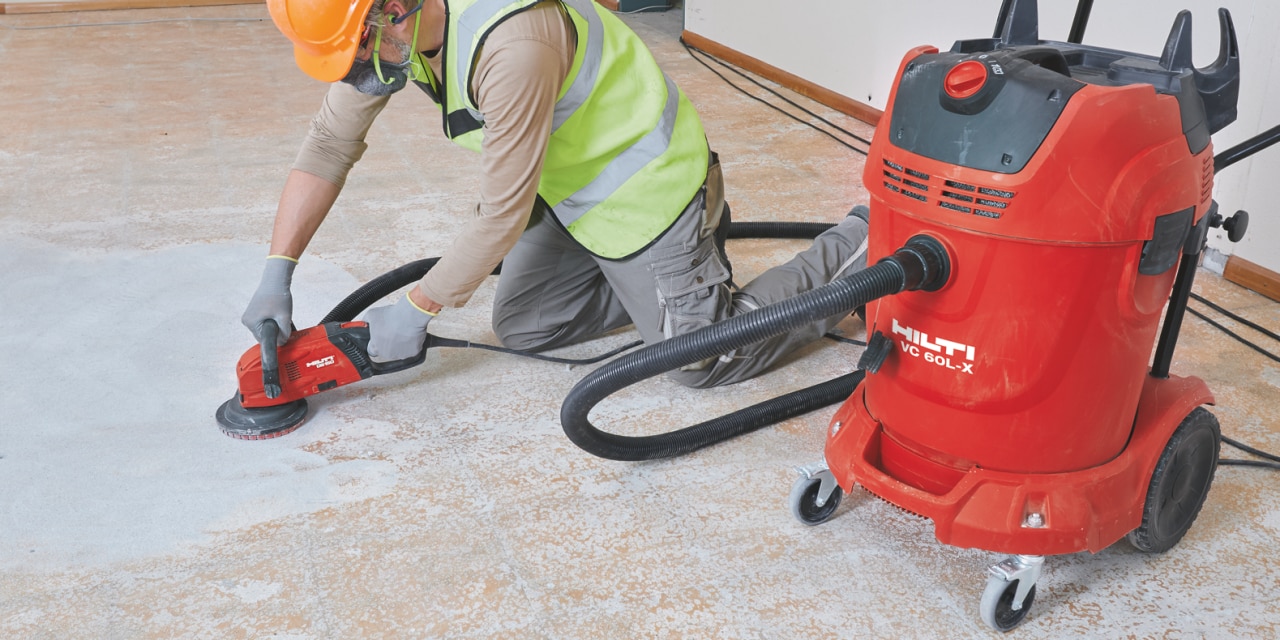
Grinding
Virtually dust-free results: when you combine tools such as the DG 150 concrete grinder with a VC 40-UM vacuum cleaner.
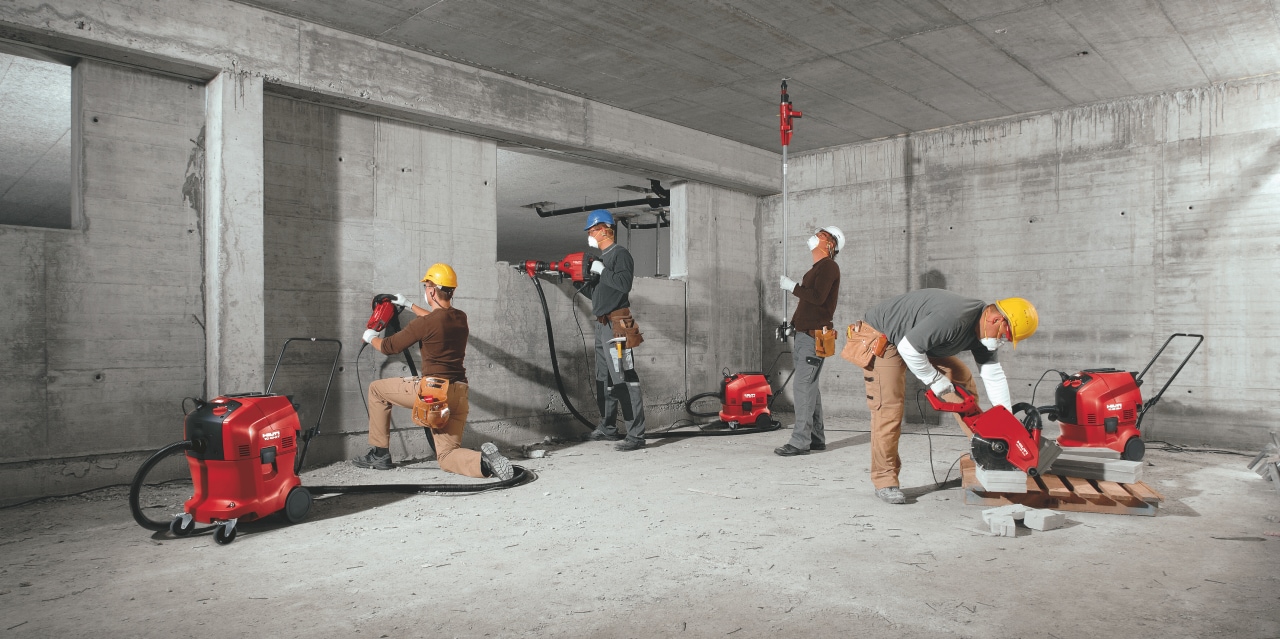
Vacuum cleaning
Hilti vacuum cleaners are powerful, highly efficient, and designed to withstand the harshest jobsite conditions.
In addition, automatic filter cleaning technology briefly reverses the flow of air inside the system every 15 seconds, to prevent dust build-up on the filter, and keep suction high.
Organizational: measures to reduce dust exposure
The third stage of the "STOP principle" is to find and put in place organizational measures that help minimize dust exposure.
One practical method is job rotation, switching teams between dusty tasks, and thereby reduce exposure times for each individual. Similarly, many in the construction industry have introduced the ‘Ban the Broom’ initiative, meaning construction dust is vacuumed rather than brushed into the air.
Thirdly, construction workers at all levels should be informed regularly about the dangers, through industry training, to help minimize dust exposure. To help you with this, impartial advice and guidance is available from the UK Construction Dust Partnership [3] and the Health and Safety Executive’s Dust hub [4]. Hilti also offers comprehensive dust training that is highly interactive and developed for construction workers. Our safety training sessions are a mixture of practical exercises with exclusive hardware, media animations and theory.
Personal protective equipment: where health risks remain
Lastly, if there is no way for tradespeople to remain below dust limit values, then it’s important to use relevant personal protective equipment (PPE). Dust masks, eye protection, disposable overalls and gloves are all essential kit, even when using virtually dust-free tools. In conditions where dust levels are unavoidably high, respirators may be necessary for maximum protection against dust inhalation.